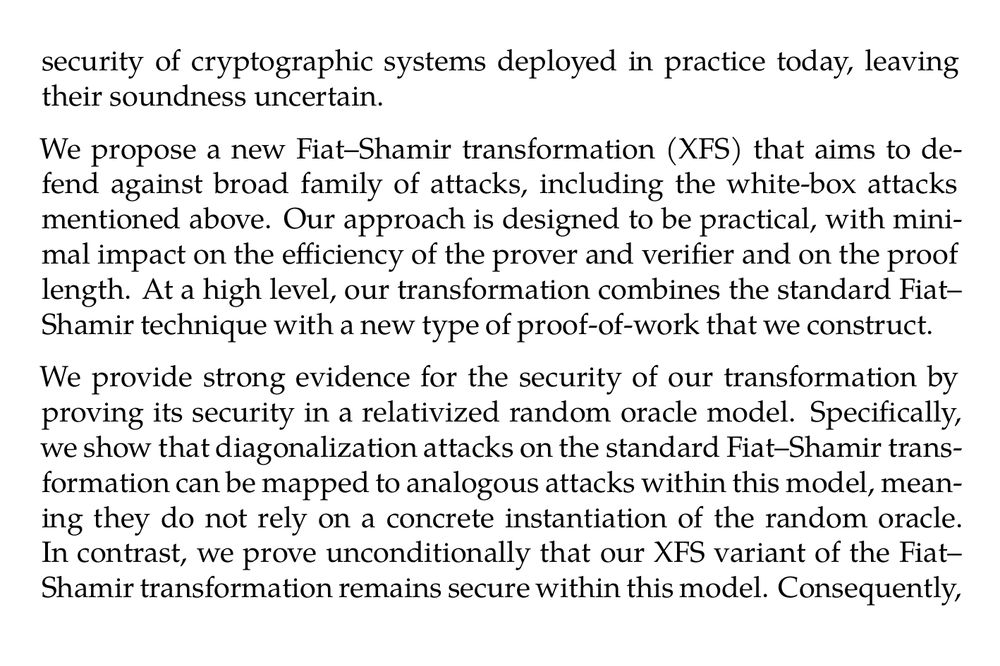Cryptography research and auditing at zkSecurity. Recurring co-host on the ZKPodcast.
Troubadour at HMLTD. ♟ 1. b3.
nmohnblatt.github.io
blog.zksecurity.xyz/posts/fri-se...
blog.zksecurity.xyz/posts/fri-se...

🥁🥁🥁🥁
How to Build Hash Functions, with Jean-Philippe (JP) Aumasson @aumasson.jp & @nicomnbl.bsky.social
Watch the full module here: zkhack.dev/whiteboard/s...
🥁🥁🥁🥁
How to Build Hash Functions, with Jean-Philippe (JP) Aumasson @aumasson.jp & @nicomnbl.bsky.social
Watch the full module here: zkhack.dev/whiteboard/s...
@arro.bsky.social and @nicomnbl.bsky.social chat w @grjte.sh & @goblinoats.com about the foundations of local-first architecture, CRDTs and how ZK can be incorporated into these models.
zeroknowledge.fm/podcast/367/

@arro.bsky.social and @nicomnbl.bsky.social chat w @grjte.sh & @goblinoats.com about the foundations of local-first architecture, CRDTs and how ZK can be incorporated into these models.
zeroknowledge.fm/podcast/367/

➔ github.com/lattirust

➔ github.com/lattirust
nmohnblatt.github.io/ligerito-and...

How did the second season of ZK Whiteboard Sessions come to life – a thread.
TLDR: Check out the 8-module series on YouTube (link in bio), and the "FRI edition" Study Group starting on Tuesday March 4 on ZK Hack Discord (link in bio)!
🧵👇




Part 1 covers the computation model, why it breaks some cryptography and effects on mining
zeroknowledge.fm/podcast/288/
1/2
Part 1 covers the computation model, why it breaks some cryptography and effects on mining
zeroknowledge.fm/podcast/288/
1/2
Tl;dr: do proof-of-work before deriving the FS challenge, this will make the hash prohibitively expensive to compute in-circuit.
Caveat: they only prove the security of their transform for 1-round protocols



Tl;dr: do proof-of-work before deriving the FS challenge, this will make the hash prohibitively expensive to compute in-circuit.
Caveat: they only prove the security of their transform for 1-round protocols
“As of Friday, February 21, Apple can no longer offer Advanced Data Protection as a feature to new users in the UK.”



zkhack.dev/whiteboard/s...
zkhack.dev/whiteboard/s...
zkhack.dev/whiteboard/s...
zkhack.dev/whiteboard/s...
* programming difficulty may vary, developer discretion is advised.
* programming difficulty may vary, developer discretion is advised.
Their keypairs are for the secp256k1 curve, which Ethereum also uses. That means you can derive an ETH address from their publicly accessible signing keys.
Their keypairs are for the secp256k1 curve, which Ethereum also uses. That means you can derive an ETH address from their publicly accessible signing keys.


Scribe is a new low-memory SNARK that is able to prove arbitrarily-large circuits while using minimal memory.
Joint work with my excellent student coauthors Anubhav, Tushar, Karan, and Steve. (1/4)
Link: eprint.iacr.org/2024/1970

baincapitalcrypto.com/chosen-insta...
This was also the theme of the "Zeitgeist" puzzle at ZK Hack 5!
baincapitalcrypto.com/chosen-insta...
This was also the theme of the "Zeitgeist" puzzle at ZK Hack 5!
Joint work with @nicomnbl.bsky.social and @lmao.bsky.social (with help from our friends Nash, Sanaz, and John at @celestiaorg.bsky.social)
A minor tweak to the encoding procedure makes data squares like Celestia's provably correct
Paper: bit.ly/zoda2
Blog: bit.ly/zoda1






